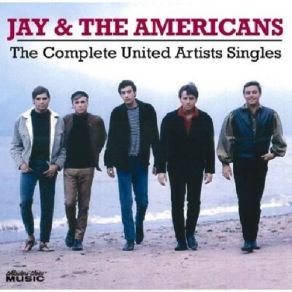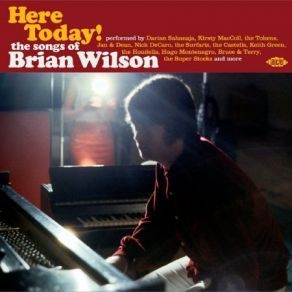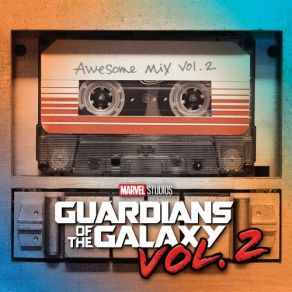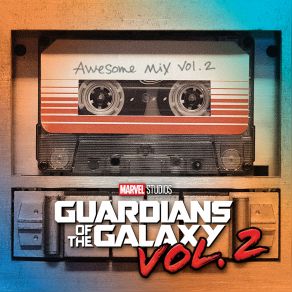Jay & The Americans
Wikimp3 information about the music of Jay & The Americans. On our website we have 39 albums and 70 collections of artist Jay & The Americans. You can find useful information and download songs of this artist. We also know that Jay & The Americans represents Rock genres.
Biography
[Edit]Though they had a bunch of hits across the 1960s, Jay & the Americans were a throwback to a previous era in their doo wop-influenced vocals, neatly groomed, short-haired appearance, and mix of pop/rock with operatic schmaltz. Built around the neck-bulging upper-register vocals of David Blatt aka Jay Black, their biggest hits — "She Cried," "Cara Mia" (which you could, in the second half of the 1970s, just imagine Eddie Mekka's Carmine Ragusa, aka "The Big Ragu," singing on Laverne & Shirley), "Come a Little Bit Closer," and "Let's Lock the Door (And Throw Away the Key)" — came off as sort of hit parade versions of West Side Story. The group also relied on outside songwriters for its material, drifting into MOR covers of oldies by the end of the '60s, and was generally a sort of textbook of unhipness during a time when self-contained rock bands were becoming the norm.
In a sense, Jay & the Americans were the original "oldies" act — organized at the transition of the 1950s into the 1960s, the group sounded like a throwback to that earlier decade, at a time when harmony vocal groups — at least those without some guitar wattage accompanying them — were already becoming old hat. Yet, somehow, they competed with the likes of the Beach Boys, Jan & Dean, and the Four Seasons, among homegrown rivals, and remained a major presence on radio even during the British Invasion, and lasted long enough to meet up — like a glider catching a brisk, sustaining wind — with the oldies boom at the tail end of the decade. They seemed out of place for most of the 1960s with their short hair, neat clothes, and dedication to schmaltzy pop, but by the end of the decade were perfectly positioned for the so-called rock & roll revival.
The group actually coalesced out of the Mystics, a Brooklyn-based harmony vocal group (best remembered for "Hushabye"), which had taken on John Traynor (aka Jay Traynor) as lead singer at the very end of the 1950s. Traynor chanced to cross paths with Sandy Yaguda (aka Sandy Deane) and Kenny Rosenberg (aka Kenny Vance), who were part of a vocal trio working behind a female singer on a Clay Cole-sponsored tour at the time. Traynor got together with Vance and another friend, Howie Kerschenbaum (aka Howie Kane), after leaving the Mystics in 1960, and they started singing together, with Sandy Deane joining to make it a quartet. It was on the strength of their demo of an old Five Keys number, "Wisdom of a Fool," that they were signed by producers/songwriters Jerry Leiber and Mike Stoller to a contract — Leiber & Stoller gave the group a name, the Americans, and got them a recording contract with United Artists, the newest in a wave of record labels spawned by movie companies, and eager to grab a piece of the rock & roll action of the period.
A recording of the Bernstein-Sondheim song "Tonight" from West Side Story — a United Artists film release, in which the parent company had an interest in the publishing as well as in publicizing the movie — came out both better and different from the way it was expected, featuring Traynor out in front as lead singer rather than an ensemble vocal at its center. Leiber & Stoller decided that the group would be better off with a lead singer's name in front and, after some attempts to turn the name into a joke, settled on Traynor's lifelong nickname "Jay" as the front name — hence, Jay & the Americans were born. Released in the summer of 1961, "Tonight" performed well in New York City — where the group was based, in the borough of Queens (later made famous by Archie Bunker and Kevin James' sitcom The King of Queens) — and a few other cities and regions, but never charted nationally. Its sales were limited to around 40,000 copies, and were overshadowed by those of a rival instrumental recording by the piano duo of Ferrante & Teicher (also on United Artists), who scored much bigger. It was once they broke away from tie-ins with current movies and chose some fresh, unique material that the group's fortunes took off, with their second release, "She Cried." Originally a B-side, this was the record that broke the group nationally — six months after the single was released with "Dawning" as its A-side (and did absolutely nothing), a DJ in San Francisco flipped it over and began playing "She Cried," which started working its way east, hitting number one successively in a dozen major cities from the West Coast to the East Coast over the next few weeks and months, and number five nationally.
The group lost momentum after this unexpected break, however, when a trio of attempted follow-ups, including their version of a Ben E. King song, "Yes," spread between a pair of singles, failed to perform nearly as well. Their future hit a seeming crisis point, however, when Traynor angrily left the quartet after a fight with Sandy Deane. Suddenly, the group was without a lead singer — while Traynor went off to a professional liaison with Phil Spector that didn't take, and a few solo sides that never sold, the Americans found a replacement in one David Blatt, who'd sung lead with a group called the Empires and, after some coaxing, came aboard as "Jay" Black. A "new" Jay & the Americans was spawned that year, expanded to a quintet with the addition of Blatt's longtime friend, guitarist Marty Kupersmith (aka Marty Sanders) — with his addition, incidentally, the Americans, with whatever "Jay" was fronting them, were starting to look a lot like the Coasters and the Drifters, both vocal groups associated with Leiber & Stoller who kept their own respective guitar players on tap. The resemblance wouldn't end there, where the Drifters were concerned.
The new group's first two singles disappeared without a trace in early 1963, but in July of that year, they roared back up the charts with a single called "Only in America" — Leiber & Stoller had intended it for the Drifters, but with the civil rights movement raising everyone's consciousness, and the streets of urban and southern America getting too hot to handle, it was impossible for a black vocal group to release so seemingly optimistic an ode to the U.S.A., even if it was laced with irony; the risk that the irony would be missed was too great. But in the hands of Jay & the Americans, who didn't seem topical or serious, it just worked, and got the group back onto the radio and to number 25 on the charts. Alas, their next record, "Come Dance with Me," didn't do nearly as well in the fall of 1963. But in the summer of 1964 — right in the middle of the British Invasion, with American acts dropping from the charts like flies in the winter time — they were back in the Top Ten with "Come a Little Bit Closer." The product of what seemed like an unfinished session, the Wes Farrell-authored record, produced by Artie Ripp, was released without Black's knowledge and roared to number three, their biggest hit since "She Cried." They followed it up with "Let's Lock the Door (And Throw Away the Key)," an adenoidal romantic anthem (also authored by Farrell) that peaked at number 11. They tried for a chart hat trick with Farrell's "Think of the Good Times," but it fell short.
And then came "Cara Mia" — if Roy Orbison hit a defining moment with "Only the Lonely," and Del Shannon had his with "Runaway," then Jay Black's was "Cara Mia." And he had to fight to get it released — one of those odd pop/rock songs displaying an operatic intensity (like "Only the Lonely" or "Runaway"), it just wasn't what the group seemed to be about, completely different from their recent hits. It was finally released after a performance on The Tonight Show yielded thousands of cards and letters requesting it — as a B-side, which was flipped over. The resulting number four hit in mid-1965 maintained the group's stubbornly high profile, amid the likes of the Beatles, the Rolling Stones, et al. The follow-up single, "Some Enchanted Evening," reached number 13 in the fall of 1965. The hits slackened off somewhat in 1966 and 1967, as "Sunday and Me," released late in 1965, peaked at number 18. They still had an audience, however, especially in New York City, where a lot of kids loved the fact that the girl who ran their national fan club had her mailing address — her house in Whitestone, Queens, no less (those were such innocent times) — listed on their albums, and that it was right there in the city.
They wouldn't chart another hit that high for three years — their version of Roy Orbison's "Crying" reached number 25, but nothing else made the Top 50 — but there was still plenty of work, doing commercials and touring. There were also some interesting LPs: Jay and the Americans (1965), Sunday and Me (1966), Livin' Above Your Head (1966), and Try Some of This (1967). The group's sound did somewhat cross over folk-rock and sunshine pop — "(He's) Raining in My Sunshine" from Try Some of This even displayed some elements of psychedelia. "Livin' Above Your Head," authored by Sanders, Vance, and Black, was a much bigger European hit for the Walker Brothers, considerably better than the group's own single, which peaked at number 76. They also crossed paths with a pair of young musicians from the New York area, Walter Becker and Donald Fagen, who became regular session players and increasingly prominent in the group's work. By that time, the quintet was also using more than one producer on many of their records, including Leiber & Stoller, Gerry Granahan, Jeff Barry, and Arnold Goland, and just as many arrangers — needless to say, consistency wasn't a hallmark of their sound during this period, and their chart positions suffered for it, especially as they tried to sound up to date à la 1966-1967.
Jay & the Americans returned to the charts late in 1968 and the first half of 1969, when they adopted a new strategy. Instead of trying to assimilate psychedelia and other contemporary sounds, they turned back to the songs that they'd known in the 1950s and early 1960s. The resulting album, Sands of Time, was accompanied by "This Magic Moment," a number six hit (selling twice as many copies as the Drifters' original single). Two more singles, "Hushabye" (harking back to the Mystics, Jay Traynor's group) and "When You Dance," lit up the airwaves. By that time, American popular culture had splintered into competing and often seemingly opposing camps — psychedelic music (especially in England) was generating offshoots like art rock and progressive rock, while artists associated with acid rock were delving more deeply into such forms as blues and jazz, and somewhere in the midst of all of it arena rock was starting to coalesce. Meanwhile, some listeners, either those in their thirties who'd never quite gotten used to musicians using (and endorsing) drugs, or the resulting music, or younger ones who just didn't know what to make of all the noise — and the fighting in the streets, and the open political warfare on the airwaves — were turning backward to a simpler time and its music.
Jay & the Americans found that audience, and never lost it. Sands of Time was a confirmed hit as an LP, and was followed up with Wax Museum, which wasn't as well executed but yielded a hit in the form of the Phil Spector co-authored "Walkin' in the Rain." The group was back on track, but for some reason, at this point, United Artists Records tightened up on their recording budgets and became careless with the group's recordings and the way they were treating the members. By the early '70s, the quintet had parted company with UA, after ten years of success. By then, each member had a good idea of what he wanted to do, and mostly it didn't involve Jay & the Americans as they'd been known.
In the split, Jay Black kept the group name — which, after a court settlement with Jay Traynor carved out a way for each to make a living through their status as one of the group's "Jays" — and kept recording into the 1970s and beyond. Marty Sanders began writing songs (and enjoyed a recent hit, in collaboration with Joan Jett, on "Bad Reputation" from the movie Shrek) in addition to playing and recording, and Sandy Deane became a producer, while Kenny Vance became a recording artist in his own right. In the 1980s, an archival live album of concert recordings from the tail end of their history, augmented with some Jay Black solo sides and outtakes of both lineups, delighted fans and won the group some new admirers. In 1990, Come a Little Bit Closer: The Best of Jay & the Americans from EMI (successor company to United Artists) solidified their chart legacy in a coherent fashion. And BGO's reissues of their LPs on CD in the 21st century have resulted in there being more Jay & the Americans material in print at once than at virtually any time in history. John Traynor, the original "Jay," died of liver cancer in Tampa, Florida in January 2014; he was 70 years old. ~ Richie Unterberger & Bruce Eder, Rovi
Title: Greatest Hits of Jay & the Americans
Artist: Jay & The Americans
Genre: Rock, Rock & Roll, Dancefloor, Pop, Dance Pop
Title: The Complete United Artist Singles (CD3)
Artist: Jay & The Americans
Title: The Complete United Artist Singles (CD1)
Artist: Jay & The Americans
Title: The Complete United Artist Singles (CD2)
Artist: Jay & The Americans
Collections
Title: Be My Valentine - Rock's Greatest Love Songs
Genre: Rock
Title: SUMMER CITY SONGS
Title: Compact Disc Club - Yesterdays CD 2
Genre: Pop Rock
Title: Compact Disc Club - Yesterdays CD 3
Genre: Pop Rock
Title: 1000 Original Hits 1964
Genre: Rock
Title: 100 Oldie Collection CD 20
Genre: Pop Rock
Title: 100 Oldie Collection CD 39
Genre: Pop Rock
Title: The Teen Years - Sixteen Candles CD 2
Genre: Pop Rock
Title: Greatest Hits Of The Millenium! 1965 - 1969 (CD3)
Genre: Pop
Title: Beat Of The Pops Vol. 17
Genre: Rock & Roll, Pop
Title: The Best Of Lemon Popsicle (CD6)
Genre: Pop
Title: Stampede! The United Artists Story 1962 (CD1)
Genre: Garage, Jazz, Rockabilly
Title: Stampede! The United Artists Story 1962 (CD2)
Genre: Garage, Jazz, Rockabilly
Title: Stampede! The United Artists Story (CD3)
Genre: Garage, Jazz, Rockabilly
Title: One Hit Wonders - 1960-67 (CD1)
Genre: Pop
Title: 60s Top Hits (CD4)
Genre: Pop
Title: Easy Street Musica Para Tu Auto Vol 1
Genre: Pop
Title: Are You Lonesome Tonight? - Great Romantic Pop (CD4)
Genre: Pop
Title: When Rock & Roll Was Young (CD7)
Genre: Rock, Rock & Roll
Title: The Golden Age Of American Rock 'n' Roll Vol. 5
Genre: Hip Hop/R&B, Rock & Roll, Country, Pop
Title: The Songs Of Leiber & Stoller (CD1)
Genre: Hip Hop/R&B, Rock & Roll, Pop
Title: The Songs Of Leiber & Stoller (CD3)
Genre: Hip Hop/R&B, Rock & Roll, Pop
Title: Easy Street, Vol. 2
Title: Ultimate Jukebox - Hits Of The 60s (CD2)
Genre: Hip Hop/R&B, Rock, Pop
Title: The Teen Years Vol. 2 - Sixteen Candles (CD2)
Genre: Rock, Rock & Roll, Pop
Title: Hit History 1962
Title: Hit History 1964
Title: Hit History 1965
Title: Jukebox Hits Of 1964 Vol. 4
Genre: Pop
Title: Jukebox Hits Of 1965, Volume 2
Genre: Pop
Title: Jukebox Hits Of 1965 Vol. 3
Genre: Pop
Title: Jukebox Hits Of 1969 Vol. 2
Title: Easy Love (Bamboleo Edition)
Title: This Magic Moment: The Sound Of The Brill Building (CD1)
Genre: Rock, Rock & Roll, Pop
Title: This Magic Moment: The Sound Of The Brill Building (CD2)
Genre: Rock, Rock & Roll, Pop
Title: Here Today! The Songs Of Brian Wilson
Genre: Pop Rock
Title: 300 Hits: Love Songs (CD05 - Happy Mothers Day)
Genre: Hip Hop/R&B, Soul, Blues, Rock, Country, Rockabilly, Western Swing, Pop, Contemporary Folk
Title: The Rock 'N' Roll Era The Last Dance
Genre: Rock, Rock & Roll
Title: 60s Flames Game (CD2)
Genre: Blues, Country, Rockabilly, Instrumental, Instrumental
Title: Pop Rock 60s (CD2)
Title: My Favourite Hits Of 1964 (CD4)
Genre: Pop
Title: Hey! That's My Song (CD1)
Title: Hey! That's My Song (CD2)
Title: Hey! That's My Song (CD3)
Title: The Best Around 60s Oldies (CD1)
Genre: Hip Hop/R&B, Jazz, Psychedelic Rock
Title: Rock And Roll Music: The Songs Of Chuck Berry
Genre: Hip Hop/R&B, Reggae
Title: Jazz Up To Dance
Genre: Jazz
Title: 60s Beat And Pop Hits 2017
Genre: Soul, Blues, Rock & Roll, Country, Rockabilly, Pop
Title: Billboard Top 100 Hits Of 1964 (CD1)
Genre: Rock, Punk Rock, Pop, Instrumental, Instrumental
Title: Capodanno Italiano (Happy New Year 2019) (CD2)
Genre: Pop
Title: Continental Capers 2019
Title: 60s Hits 2 (Universal Music Belgium)
Genre: Hip Hop/R&B, Rock, Rock & Roll, Punk Rock, Reggae, Country, Pop, Acoustic, Classical
Featuring albums
Title: Karaoke - Singing to the Hits: Vocal Extreme! (Rerecorded Version)
Artist: Various Artists
Genre: Hip Hop/R&B, Soul, Pop
Title: Flight Of The Intruder (Original Soundtrack)
Artist: BASIL POLEDOURIS
Genre: Theatre/Soundtrack
Title: I Love the 60's: 1965 (Re-Recorded Versions)
Artist: Various Artists
Title: After Dusk: 16 Love Songs for Those Hot Nights
Artist: Various Artists
Genre: Hip Hop/R&B, Soul, Rock, Punk Rock






























































































































